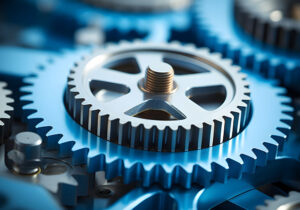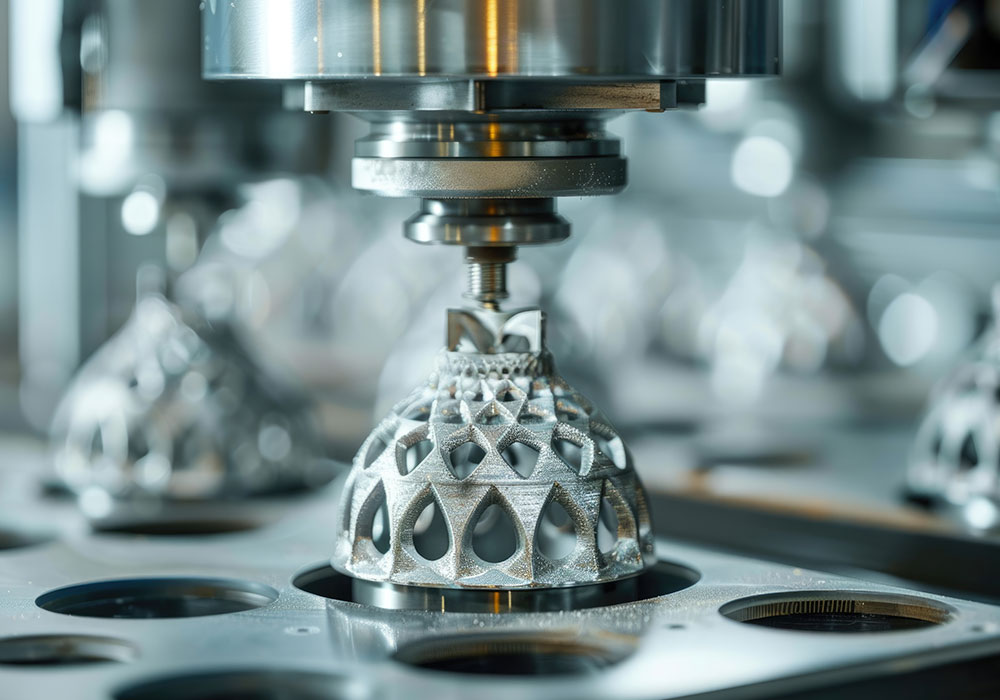Discover the Role of Additive Manufacturing in Gear Production
Author Sushmita Das on April 19, 2024
Additive manufacturing in gear production refers to the utilisation of additive manufacturing techniques, commonly known as 3D printing, to create gears. Unlike traditional manufacturing methods such as machining or casting, which involve subtractive processes (removing material from a solid block or casting molten metal into a mould), additive manufacturing builds gears layer by layer using digital designs.
In AM, a digital model of the gear is sliced into thin cross-sectional layers, and the gear is then built layer by layer using a variety of materials, including metals, polymers, and composites. This process allows for the creation of complex geometries that may be difficult or impossible to achieve using traditional methods.
What is Additive Manufacturing in Gear Production?
Additive manufacturing in gear production refers to the utilisation of additive manufacturing techniques, commonly known as 3D printing, to create gears. Unlike traditional manufacturing methods such as machining or casting, which involve subtractive processes (removing material from a solid block or casting molten metal into a mould), additive manufacturing builds gears layer by layer from digital designs.
In additive manufacturing, a digital model of the gear is sliced into thin cross-sectional layers, and the gear is then built layer by layer using a variety of materials, including metals, polymers, and composites. This process allows for the creation of complex geometries that may be difficult or impossible to achieve using traditional methods.
Advantages of Additive Manufacturing in Gear Production
Design Flexibility: AM allows for complex gear designs that are difficult or impossible to achieve using traditional methods. Engineers can optimise gear geometries for specific applications, enhancing performance and efficiency.
Rapid Prototyping: Prototyping is a crucial stage in gear development. Additive manufacturing enables quick iteration and validation of designs, accelerating the product development cycle and reducing time to market.
Cost-Effectiveness: While traditional manufacturing methods may require expensive tooling and long lead times, additive manufacturing offers cost-effective production, particularly for low-volume or customised gears. It eliminates the need for specialised tooling, leading to cost savings and improved scalability.
Material Optimization: This process of gear manufacturing allows for the use of a wide range of materials, including polymers, metals, and composites. Engineers can select materials tailored to specific performance requirements, optimising gear properties such as strength, wear resistance, and weight.
Challenges and Considerations
Despite its numerous benefits, additive manufacturing in gear production is not without challenges. Key considerations include:
Material Selection and Properties: While additive manufacturing offers material versatility, not all materials are suitable for gear applications. Engineers must carefully consider material properties such as strength, hardness, and thermal stability to ensure the performance and durability of gears.
Surface Finish and Accuracy: Achieving the desired surface finish and dimensional accuracy can be challenging in additive manufacturing. Post-processing techniques such as machining and polishing may be required to meet tight tolerances and surface quality standards.
Process Control and Reliability: Additive manufacturing processes require precise control of parameters such as temperature, speed, and layer thickness. Variations in process parameters can affect part quality and consistency, necessitating robust process monitoring and quality assurance measures.
Advancements in Additive Manufacturing Technologies
Advancements in additive manufacturing technologies continue to drive innovation in gear production. Some notable developments include:
Multi-Material Printing: Emerging technologies enable the deposition of multiple materials within the same part, allowing for the integration of functional features such as embedded sensors or lubrication channels in gears.
High-Temperature Materials: Additive manufacturing processes capable of handling high-temperature materials such as metal alloys expand the range of applications for gears in demanding environments, such as aerospace and automotive industries.
Topology Optimization: Advanced design software and algorithms enable topology optimisation, where the material is strategically distributed within a component to minimise weight while maintaining structural integrity. This approach enhances gear performance and efficiency.
Additive manufacturing has emerged as a transformative technology in gear production, offering unprecedented design flexibility, rapid prototyping capabilities, and cost-effective manufacturing solutions. While challenges such as material selection and process control persist, ongoing advancements in additive manufacturing technologies are driving innovation and expanding the possibilities for gear design and production. Engineering professionals play a vital role in shaping the future of additive manufacturing in gear production, leveraging their expertise to unlock new opportunities and overcome technical challenges in this dynamic field.
To summarise, the integration of additive manufacturing techniques such as 3D printing holds immense potential for revolutionising gear production, paving the way for enhanced performance, customisation, and efficiency in diverse industrial applications.
Post Views: 244

